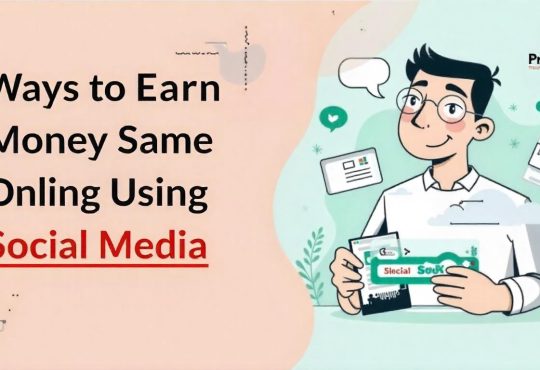
Car Insurance: The 7 Secret Tactics Your Company is Hiding from You!
When you purchase car insurance, you might think you know everything there is to know. However, the reality is that most companies keep certain tactics hidden that could save you a lot of money. They use specific strategies that increase your premiums or make the claims process more difficult than it needs to be. For example, they rarely disclose easy ways to lower your premiums, or they remain vague about how deductibles actually work in their favor. Additionally, there are hidden fees that come into play when extending your policy, and certain discounts, like accident-free bonuses, are often not clearly explained. Understanding these hidden tactics could help you make better decisions and save hundreds of dollars on your car insurance. In this article, we’ll uncover the top 7 secrets your car insurance company doesn’t want you to know!
They’ll Never Tell You the Simple Ways to Reduce Your Premium!- Car Insurance
Car insurance companies want you to believe that the premium you’re quoted is the best deal possible. However, there are several simple ways to reduce your premium that they rarely disclose. One of the most effective strategies is adjusting your deductible. By opting for a higher deductible, you can lower your monthly premium significantly. Most insurance companies don’t emphasize this because they profit more from higher premiums.
Another way to save is by bundling your insurance policies. If you have other types of insurance—like home or renter’s insurance—combining them with your car insurance can lead to substantial discounts. Companies know this but often don’t make it obvious during the purchasing process. They would prefer you buy standalone policies because they earn more that way.
Additionally, maintaining a good driving record is key to lowering your premium. Safe driving discounts are available but are not always clearly advertised. Some companies offer “accident forgiveness” programs, which means your premium won’t increase after your first accident, but this is not something every company promotes upfront. You may have to specifically ask for it.
Lastly, many insurance companies offer discounts for installing anti-theft devices or taking defensive driving courses. These safety features lower the risk of theft or accidents, making you less of a liability in the eyes of the insurer. Again, this is something you need to inquire about, as they typically won’t bring it up.
To optimize your savings, it’s crucial to do your own research and ask your insurer specific questions. Companies often keep these money-saving tactics in the shadows to maximize their profits, so don’t hesitate to dig deeper and negotiate for a better deal.
The Hidden Game Behind Deductibles: How They Make You Pay More!- car Insurance
One of the biggest misconceptions in car insurance is how deductibles work. While car insurance companies let you choose your deductible amount, they don’t always explain the full impact of your choice. A deductible is the amount you’re required to pay out of pocket before your insurance kicks in after an accident or claim. What they often fail to mention is how a low deductible might seem attractive but actually results in higher premiums in the long run.
Many drivers opt for a lower deductible thinking it will save them money in the event of an accident. However, this decision increases your monthly premiums significantly. Insurance companies make more money off of these higher premiums, so they are in no rush to advise you to choose a higher deductible. A higher deductible can lower your monthly costs by 10-20%, potentially saving you hundreds of dollars annually.
Another hidden aspect is that insurance companies may not clarify when you should raise or lower your deductible based on your driving habits. For example, if you’re a safe driver with a long accident-free history, opting for a higher deductible makes sense because the likelihood of you needing to file a claim is low. However, the insurance company won’t volunteer this information.
Finally, when you do need to file a claim, some companies may impose hidden fees or restrictions related to your deductible, making it harder to recover your losses. For instance, certain repairs or types of damage may not fully count toward your deductible, resulting in out-of-pocket costs you weren’t expecting.
Understanding how deductibles truly work can save you money both upfront and in the long term. Always ask your insurance agent to clearly explain the deductible process and consider choosing a higher deductible if it aligns with your financial situation.
The Secret Behind Accident-Free Discounts: What They Don’t Want You to Know!- car Insurance
Many insurance companies offer accident-free discounts, but they don’t always make it easy for you to qualify or keep them. Typically, these discounts are offered to drivers who have gone a certain number of years without filing an accident claim. However, there are several conditions and fine print that car insurance companies don’t openly share, making it more difficult to maintain these discounts.
First, even a minor incident that doesn’t result in a claim can sometimes disqualify you from receiving an accident-free discount. For instance, if you’re involved in a minor fender-bender but don’t file a claim, your insurer could still record the incident, which may impact your eligibility for the discount. Most companies won’t tell you this upfront.
Second, these discounts may not apply immediately after an accident-free period. Some insurers make you wait an additional year before applying the discount, effectively delaying your savings. Moreover, if you switch insurance companies during your accident-free period, your new insurer may not honor the time you’ve already accumulated without an accident, forcing you to start from scratch.
Another hidden tactic is that accident-free discounts are sometimes linked to other policies or programs, like safe driving apps or telematics devices. These apps monitor your driving habits and can either increase or decrease your discount based on how well you drive. What many drivers don’t realize is that these apps often track more than just your driving speed; they can also monitor harsh braking, acceleration, and even the time of day you drive. If you don’t meet their criteria, your discount could be reduced or removed without you realizing it.
To ensure you’re getting the full benefit of accident-free discounts, always review the terms and conditions and consider how your driving habits could affect your eligibility. Ask your insurer specific questions about how incidents are recorded and whether switching companies will reset your accident-free clock.
Hidden Fees When Extending Your Policy: Beware of These Costly Add-Ons!
Car insurance companies rarely disclose the full cost of extending your policy, and hidden fees are often tacked on without you realizing it. These hidden charges can add up quickly, inflating your total cost over time.
One of the most common hidden fees is related to administrative costs. When you renew or extend your policy, some companies charge a processing or renewal fee. This is usually a small amount, but over multiple extensions, it can add up to a significant sum. Unfortunately, these fees are often buried in the fine print and not clearly communicated upfront.
Another fee that catches many drivers by surprise is the “mid-term adjustment” fee. If you need to make changes to your policy, such as adding a new driver or updating your vehicle, insurance companies may charge a fee to make these adjustments. While it’s reasonable to expect a fee for major changes, some companies even charge for minor updates, like changing your address or adjusting your coverage limits.
Late fees are another hidden cost that many people overlook. If you’re late in making a payment, even by a few days, your insurance company may impose a penalty. In some cases, this can lead to higher premiums upon renewal, as the late payment can negatively impact your payment history with the insurer.
Lastly, there are cancellation fees to be aware of. If you decide to switch insurance providers before your policy term is up, some companies will charge a cancellation fee. This fee can be quite hefty, especially if you’re breaking a long-term policy early.
To avoid these hidden fees, always read the fine print of your policy carefully. Ask your insurer to outline any additional costs associated with extending or adjusting your policy so that you’re not caught off guard when it’s time to renew or make changes.
The Secret Trap of Losing Your Bonus After a Claim!
One of the biggest frustrations for drivers is the risk of losing their no-claims bonus (NCB) after filing a claim. A no-claims bonus is a discount you receive for each year you don’t file a claim. However, car insurance companies often make it difficult to keep this bonus intact after an accident, even if it’s not your fault.
The tricky part is that insurance companies typically don’t explain how quickly you can lose your bonus or how much it will cost you. For example, after just one claim, your NCB could be reduced or eliminated entirely, resulting in a significant increase in your premiums. Even if the accident wasn’t your fault, some insurers will still reduce your NCB if they cannot recover the full cost from the other party involved.
Some insurers offer a feature called “no-claims bonus protection,” which allows you to keep your bonus even after filing a claim. However, this protection comes at an extra cost, and it’s not always clear how much coverage you’ll get. In many cases, the protection only applies to one claim within a specific period, so if you have multiple claims, you could still lose your bonus.
Furthermore, some companies may use the “step-back” system, which reduces your NCB by a set number of years instead of eliminating it entirely. While this sounds like a better deal, it still results in higher premiums, and insurers rarely clarify how this system works.
To avoid losing your bonus unnecessarily, it’s essential to understand the terms and conditions of your NCB. Consider whether it’s worth purchasing NCB protection, especially if you’re a low-risk driver. Always review the fine print and ask your insurer how filing a claim will impact your bonus before you proceed.
How Car Models Impact Your Premium: The Secret Formula!
One of the lesser known factors that significantly affect your car insurance premium is the make and model of your vehicle. Insurance companies use a complex formula to determine how much risk is associated with insuring a particular car, but they rarely explain how this calculation works. Knowing the secrets behind this formula can help you make better decisions when buying a new car or renewing your policy.
The first factor insurers consider is the vehicle’s safety rating. Cars with higher safety ratings are typically less expensive to insure because they are less likely to result in serious injuries or damage in the event of an accident. Insurers use data from organizations like the National Highway Traffic Safety Administration (NHTSA) and the Insurance Institute for Highway Safety (IIHS) to assess your car’s safety. However, many insurance companies don’t openly share how these ratings influence your premium. By choosing a car with advanced safety features like lane departure warnings, automatic braking, or airbags, you can significantly lower your insurance costs.
Another key factor is the cost of repairs. Luxury or sports cars, for example, often have higher premiums because their parts are more expensive to replace. Even if you’re a safe driver, the higher cost of repairs makes your car riskier to insure in the eyes of the company. Similarly, cars that are popular targets for theft, like certain models of SUVs or sports cars, will result in higher premiums. Insurance companies have access to data on theft rates, but they don’t always advise you on which models are most prone to theft when you’re selecting a policy.
What many drivers don’t know is that some insurers offer discounts for cars with anti-theft devices or tracking systems. If your vehicle comes with built-in security features, you could qualify for a lower premium, but insurance companies rarely advertise this. Instead, you have to ask specifically if these discounts are available for your car model.
Another secret insurance companies won’t tell you is how modifications to your car can increase your premium. Even minor changes, like upgrading your sound system or adding custom wheels, can make your car more expensive to insure. Modified cars are generally considered riskier, either because they’re more expensive to repair or because they attract more attention from thieves. If you make any modifications to your vehicle, always report them to your insurer to avoid any surprises when it’s time to renew your policy.
Lastly, the age of your car plays a significant role in determining your premium. Newer cars often have higher premiums because they are more expensive to repair or replace. However, older cars can also result in higher premiums if they lack modern safety features or are more prone to breakdowns. The balance between age, safety features, and repair costs is something insurance companies calculate carefully, but rarely explain to their customers.
To get the best possible premium, it’s important to understand how your car’s make and model influence your insurance rate. Always ask your insurer for a detailed breakdown of the factors affecting your premium, and explore whether any discounts are available based on your car’s safety features or anti-theft devices.
Customer Loyalty Isn’t Enough: Extra Savings Opportunities You’ll Never Hear About!
Car insurance companies often reward long-term customers with loyalty discounts, but what they won’t tell you is that loyalty isn’t always the best way to save money. In fact, being loyal to one insurer could mean you’re missing out on better deals elsewhere. Many insurers offer enticing discounts to new customers that aren’t available to existing ones, so switching companies periodically can actually save you more money.
One of the biggest secrets in the car insurance industry is the practice of “price optimization.” This is when insurers calculate how much they can increase your premium based on how likely you are to stay with them. In other words, if they think you’re unlikely to shop around, they might raise your premium gradually over time without you noticing. This tactic is why it’s essential to compare quotes from different insurers every year, even if you’ve been with your current provider for a long time.
Another missed opportunity for savings comes in the form of temporary discounts. For instance, some insurers offer discounts for drivers who use telematics or install a monitoring device in their car. These devices track your driving habits and reward safe driving with reduced premiums. However, these offers are often reserved for new customers or are only available for a limited time. Unless you specifically ask about them, you might never know they exist.
Additionally, many insurers offer discounts for paying your premium in full rather than in monthly installments. While this might seem like a small saving, it can add up over time. Similarly, opting for paperless billing or automatic payments can result in minor discounts that companies won’t always advertise.
Finally, combining multiple policies, such as home and auto insurance, can lead to significant savings through bundling discounts. However, insurers won’t always suggest this option unless you ask, as they make more money when you hold separate policies.
To maximize your savings, don’t rely solely on loyalty discounts. Be proactive about asking your insurer for other available discounts and compare quotes regularly to ensure you’re getting the best deal possible.



